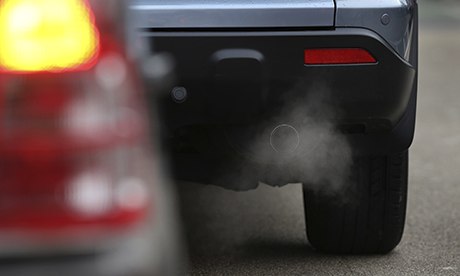Study links air pollution and traffic with low birthweight

Babies born to mothers who live in areas with air pollution and dense traffic are more likely to have a low birthweight and smaller head circumference, according to a large European study.
The researchers, who included a team from the UK, found that babies were smaller even in areas with relatively low levels of air pollution, well below the limits considered acceptable in European Union guidance.
For every increase of 5 micrograms per cubic metre in exposure to fine particulate matter during pregnancy, the risk of low birthweight in the baby rose by 18%.
Although they cannot establish from this research that air pollution is the cause of low birthweight, the authors of the study, published in the Lancet respiratory medicine journal, believe the link is strong enough to demand action.
"Our findings suggest that a substantial proportion of cases of low birthweight at term could be prevented in Europe if urban air pollution, particularly fine particulate matter, was reduced," said lead author Dr Marie Pedersen from the Centre for Research in Environmental Epidemiology in Barcelona.
Low birthweight in babies is a concern, because it often predicts poorer health as children and later as adults. A small head circumference could indicate problems with neurodevelopment.
The research pooled the results of studies from 12 countries in Europe, involving more than 74,000 women who gave birth between 1994 and 2011, living in a range of different settings, from inner-city to semi rural. One of the biggest cohorts, involving 11,000 women, was from Bradford.
Dr John Wright, director of the Bradford Institute for Health Research and chief investigator of the ongoing Born in Bradford study which is following the lives of more than 13,000 families, said the findings allowed for other aspects of the women's lives that could have led to smaller birthweight babies.
"There tends to be social patterning – poor people tend to live in inner-city areas where there is more road traffic and poorer diet," he said. But the study had achieved "very rich data collection" on the lives of the mothers, and was able to allow for other issues that could affect the baby's development, such as smoking. Mothers who smoked had a higher likelihood of a low birthweight baby than those who did not, but only a minority smoke, whereas everybody is affected by air pollution in the area where they live.
Wright said the study made the case for regulatory intervention. "You can stop smoking and drink less alcohol and get more physical exercise. Pregnant women do this really well. But for air pollution there is nothing much you can do. This is a classic example of public health policymaking that needs to happen."
In a commentary with the paper, Professor Jonathan Grigg, from Queen Mary, University of London, said: "Overall, maternal exposure to traffic-derived particulate matter probably increases vulnerability of their offspring to a wide range of respiratory disorders in both infancy and later life."
Difficult decisions needed to be made, he said. "The introduction of the low emission zone in London, UK, has had little effect on concentration of particulate matter, although the vehicle mix has been altered. UK policymakers have shied away from radical solutions to the issue, such as changing diesel-powered black cabs (which contribute 20% of London's locally generated particulate matter) to cleaner petrol-powered alternatives."